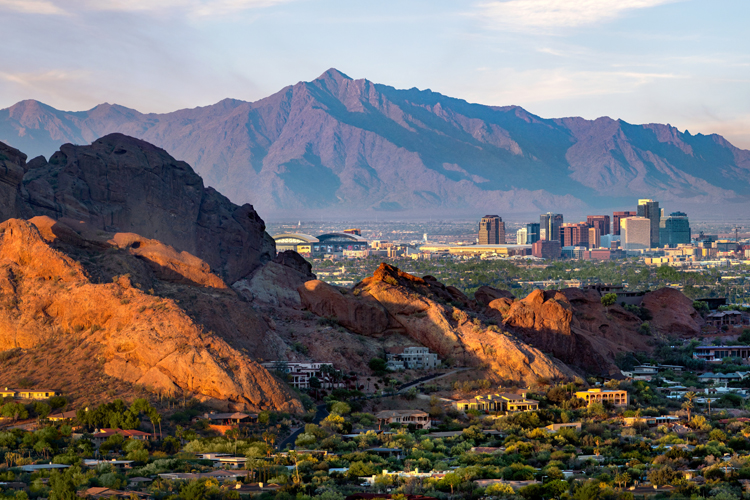From New York City to Phoenix to Los Angeles, urban areas are becoming increasingly busy. But as the population increases, landmass remains the same. Can clever city planning save the day?
The Lowdown on High Population Density
The world population currently sits around 7.7 billion people. There’s a net gain of roughly 2 million people per month. By the time you finish reading this article, the population will have increased by a few hundred people. You can watch it all unfold right here.
While you’re probably aware of the fact that the population is increasing, have you ever paused to consider the fact that landmass stays the same? (And, if anything, it’s diminishing.) It’s an interesting concept to consider – and one that global government officials and city planners spend a lot of time thinking about.
There’s only so much space in a crowded city. And even as skyscrapers stretch up to the heavens, there are concerns over how much more pressure cities can take before the infrastructure busts at the seams.
Increased population density impacts just about every aspect of city life. Real estate, traffic, public transportation, public health, energy supply, pollution – there’s nothing that it doesn’t touch. And if we want society to continue thriving for centuries to come, accommodations must be made.
Is Clever City Planning the Solution?
City planners are tasked with making sure streets, buildings, infrastructure, and land are utilized in a strategic manner that makes sense both now and for the future. As increasing populations put a strain on limited land, city planners must get more creative in an effort to maximize available resources.
Here are some examples of how cities can combat this issue:
1. Going Underground
Sewer systems and public transportation have long utilized underground space to avoid taking up valuable “livable” square footage above ground. But in cities like Hong Kong – where more than 7 million people are crammed into just 425 square miles – new underground buildings and residences are in the works.
In addition to saving space and maximizing the city’s footprint, the hope is that going underground could lead to lower carbon emissions and congestion.
“Underground structures also perform better in earthquakes and need fewer repairs, while offering better protection from typhoons and thunderstorms, which are forecast to become more severe as global temperatures rise,” Reuters reports.
Hong Kong has also contemplated the creation of artificial islands to provide more housing for the growing population – a concept that many other coastal cities have long considered.
2. Transforming Urban Cemeteries
In many cities, urban cemeteries take up massive amounts of land without providing any practical use. But removing and replacing cemeteries is a sensitive uphill battle that few city planners and government officials are willing to take on. Could there be another way to maximize this land and improve the usability of public spaces?
Brazilian visual artist Pazé believes the answer is yes – at least in his hometown of Sáo Paulo, Brazil. His “Garden of Time” exhibition – which was made using Lumion software – shows how the city could reconfigure old, neglected cemeteries to create biodiverse botanical gardens and public spaces. These spaces would continue to honor the legacy of those buried in the cemetery, while providing space for public enjoyment.
3. Invest in Mixed-Use Projects
There’s been a steep rise in the number of mixed-use real estate development projects over the past 15 years. These projects are highly effective and extremely practical in busy urban areas. They have a way of cultivating community and preventing the need for traveling long distances across the city. When people can live, work, eat, shop, and play in the same general area of the city, it eases congestion and makes cities seem more practical. More investments in mixed-use projects will benefit the future of our cities.
Preparing for Tomorrow
Every city has its own unique opportunities, restrictions, land issues, regulations, and challenges. However, there are always creative ways to combat the issues at hand. And as land maximization remains a concern, it’s refreshing to see the creative ways in which city planners are addressing land scarcity.
With enough energy and effort, we can pave the way for a brighter tomorrow.




